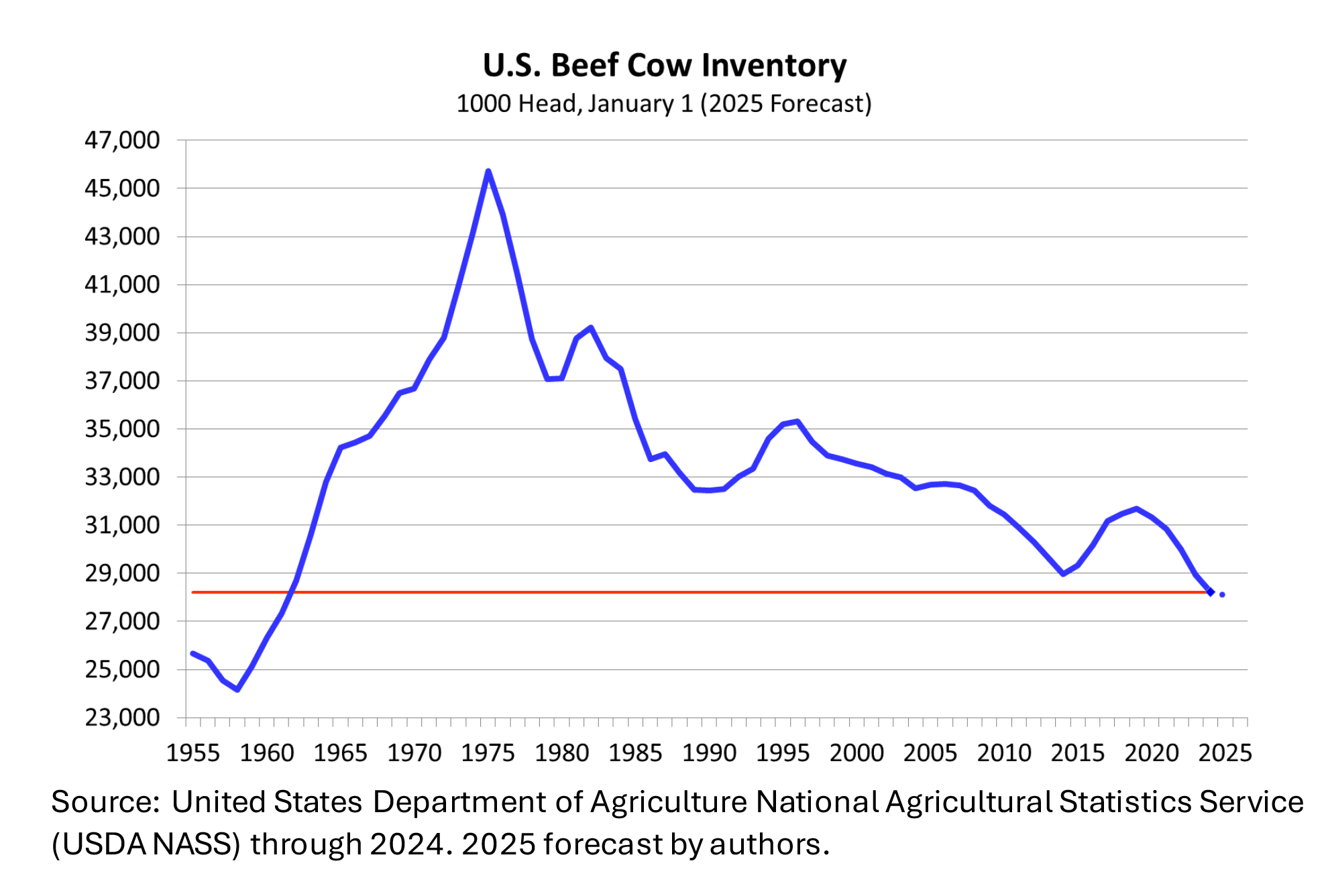*This is the sixth article in our 2025 Southwest Economic Outlook series. Oklahoma State University and OSU Extension Service, and Texas A&M University and TAMU AgriLife Extension Service economists weigh in on the 2025 outlook. A digital copy of the Economic Outlook Issue is also available online.
.gif)
Cattle prices continued to advance in 2024, with feeder and fed cattle prices strengthening in the year's final weeks. On Jan. 1, 2024, the U.S. had the smallest cattle industry in decades. Feedlot inventories peaked cyclically in 2022 but have declined relatively slowly since. From October 2023 through 2024, feedlots held average monthly inventories about equal to the year prior by feeding more heifers and by increasing average days on feed.
Fed steer and heifer slaughter in 2024 was down less than 1%, but carcass weights increased sharply, with steer and heifer carcasses averaging 24 and 19 pounds more than in 2023, respectively. Total fed beef production was up by 2% year over year through October.
Cow slaughter was sharply lower in 2024, with beef cow and dairy cow slaughter down 17.9 and 13.1%, respectively, year over year. By November, total non-fed beef production was down 13% year over year, contributing to a slight decrease in total beef production.
Retail beef demand remained robust in 2024. Retail all-fresh beef and Choice boxed beef prices averaged higher year over year through October despite increased fed beef production. The sharp decline in non-fed beef production pushed wholesale ground beef prices to record highs.
Higher U.S. prices and a generally strong dollar were headwinds for beef exports but boosted imports in 2024. However, beef exports are showing some strength in the year's second half. Beef exports for the year's first nine months were down 2.9%. Beef exports remained weak to China/Hong Kong, South Korea and Canada but were recovering to Mexico, Japan and Taiwan. Beef imports were up 21.1% year over year through September with Canada and Australia as the largest sources of beef.
What’s ahead in 2025
Low cattle inventories and tight supplies will continue to dominate cattle and beef markets. Total cattle inventories are expected to be smaller going into 2025. Despite reduced beef cow slaughter in 2024, limited inventories of replacement heifers are expected to result in a smaller beef cow herd. Beef production is expected to decrease roughly four percent year over year with feedlot inventories falling to reflect tighter supplies of feeder cattle.
Drought was still a threat in late 2024 and could extend into 2025. This and other reasons are holding back any noticeable attempts to begin herd rebuilding. Cattle prices are expected to increase to new record highs. If producers begin retaining heifers for breeding in 2025, cattle prices will advance faster and farther.
While the outlook for cattle prices is bullish and higher average prices are expected, volatility will remain high, and prices are subject to short-term setbacks. Domestic and international markets are subject to considerable macroeconomic and political uncertainty. Producers should use risk management tools, such as futures options or Livestock Risk Protection (LRP) insurance, to protect marketing windows.
